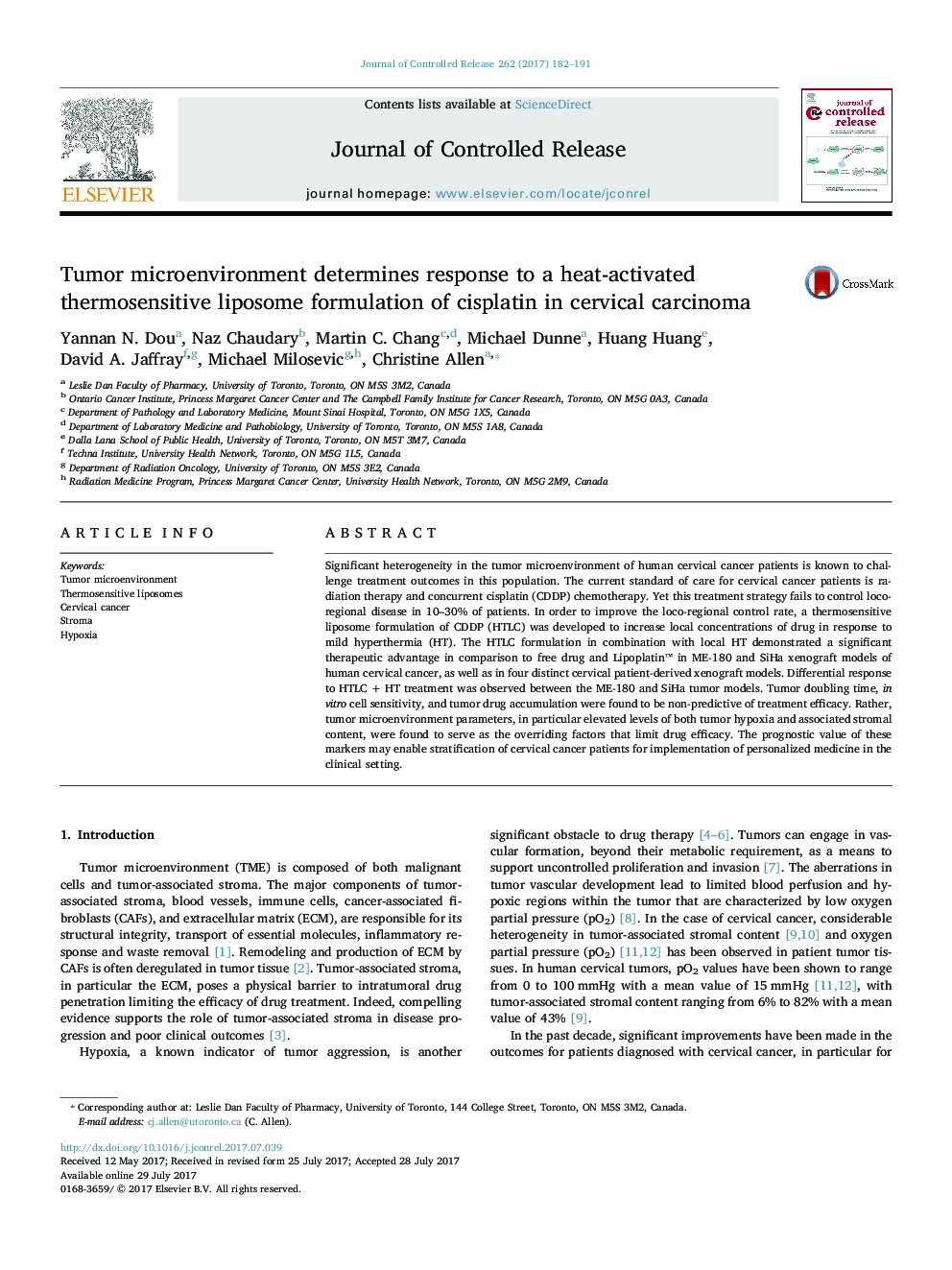| Article ID | Journal | Published Year | Pages | File Type |
|---|---|---|---|---|
| 5433473 | Journal of Controlled Release | 2017 | 10 Pages |
Significant heterogeneity in the tumor microenvironment of human cervical cancer patients is known to challenge treatment outcomes in this population. The current standard of care for cervical cancer patients is radiation therapy and concurrent cisplatin (CDDP) chemotherapy. Yet this treatment strategy fails to control loco-regional disease in 10-30% of patients. In order to improve the loco-regional control rate, a thermosensitive liposome formulation of CDDP (HTLC) was developed to increase local concentrations of drug in response to mild hyperthermia (HT). The HTLC formulation in combination with local HT demonstrated a significant therapeutic advantage in comparison to free drug and Lipoplatin⢠in ME-180 and SiHa xenograft models of human cervical cancer, as well as in four distinct cervical patient-derived xenograft models. Differential response to HTLC + HT treatment was observed between the ME-180 and SiHa tumor models. Tumor doubling time, in vitro cell sensitivity, and tumor drug accumulation were found to be non-predictive of treatment efficacy. Rather, tumor microenvironment parameters, in particular elevated levels of both tumor hypoxia and associated stromal content, were found to serve as the overriding factors that limit drug efficacy. The prognostic value of these markers may enable stratification of cervical cancer patients for implementation of personalized medicine in the clinical setting.
Graphical abstractDownload high-res image (371KB)Download full-size image
